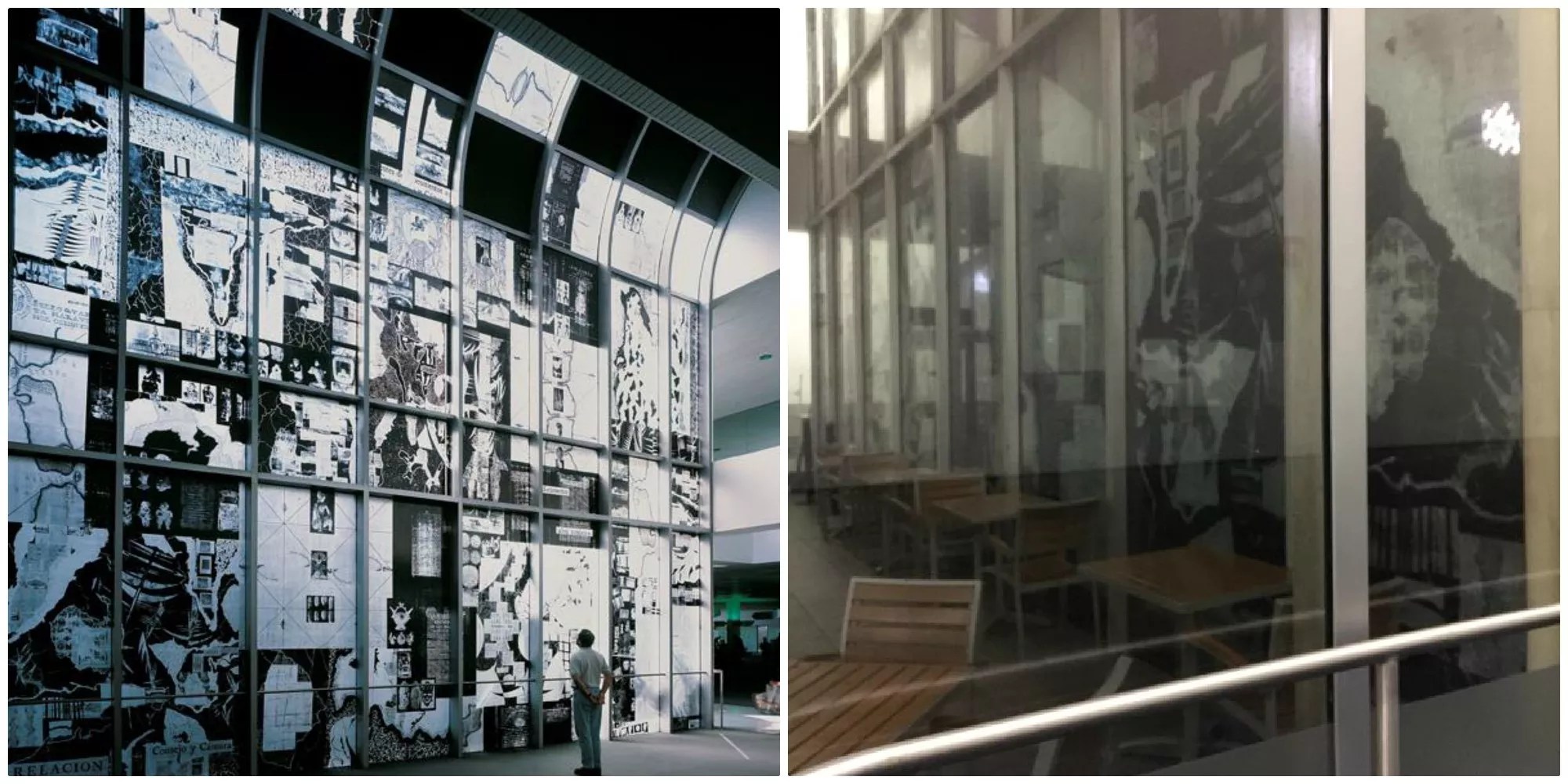
Courtesy of the artist

Audio By Carbonatix
If you work your way to the food court of Concourse D at Miami International Airport, you’ll find a narrow corridor running alongside a TGI Fridays. Most days, few people enter the small strip – it’s dark and a dead end – but if you do, you’ll see a two-and-a-half-story public installation called Años Continuos by Miami artist Maria Martinez-Cañas. Or at least part of it. The hallway is so small only half the work is visible.
Commissioned in 1994 by the Miami-Dade Art in Public Places Program, Años Continuos took two years and $225,000 in taxpayer money to install.
But Martinez-Cañas says the county has let the piece fall apart and has now “buried it” behind the popular chain restaurant. Because the hallway is only about five feet wide, it’s difficult to see the top of the work – but if you could, you would see paint peeling off in long strips.
The county has a history of letting costly public works deteriorate. In 2013, the lights in Rockne Krebs’ famous installation, The Miami Line, burnt out and went years without repairs. But the changes to Martinez-Cañas’ piece took place without her knowledge. The artist found out only Friday morning, when she was flying to New York for the opening of a group exhibition featuring her work at the Brooklyn Museum of Art. She trekked over to Concourse D to look for her installation but found the TGI Fridays instead.
“There was a cart of cleaning supplies in the hallway,” Martinez-Cañas says, “and a person napping in front of it.”
Martinez-Cañas, who has been exhibiting her work for more than 40 years, says she pitched the piece in 1994 as the capstone to a long series of work about Cuba.
“I was part of the generation that was born in Cuba but never had the opportunity to grow up there,” she says. Most of her early artwork addressed themes of displacement, using historical documents such as Christopher Columbus’ hand-drawn maps of Cuba.
The placement at MIA intrigued her because, for Cubans, a lot of family reunification takes place in airports. “It was time to let go of that work, and I wanted to go out with a bang. This installation was my bang.”
In 1994, the culture of airports was entirely different. It was years before September 11, and though it’s hard to imagine now, anyone could walk into the terminals. Martinez-Cañas chose an open area for her work – the exterior wall of a glass atrium – where everyone in the airport would be able to observe it.
“It was near a bar and a bookstore and a smoking area,” she says. “Did I love that people were smoking next to it? No. But you had at least 50 to 60 feet to be able to view the work.”
Space was important for this piece – it’s huge. Años Continuos comprises 42 sandblasted glass panels and spans an area of about 40 feet by 40 feet. It took three months just to install.
“They had to remove the original glass and replace it with my piece at the same time, for security reasons.” Martinez-Cañas says. “I had to be there at 7 a.m. Monday through Friday for three months.”
She didn’t make much money from the work – most of the fees went to installation. But she says the public piece has led to several work connections from travelers who saw it in passing.
“One firm from Munich, Germany, came through the airport. They saw my piece and they actually reached out to the city to find me,” she says. “I’ve worked with them several times in the years since.”
Over the years, Martinez-Cañas noticed the piece needed maintenance, she says. She wrote to the Art in Public Places program several times and began negotiations to repaint the problem areas. That never happened, she says. The Miami-Dade Art in Public Places program did not respond to a phone call seeking comment for this story. (Overall, the program funnels about $5 million annually to art in community spaces.)
The neglect is not only insulting to Martinez-Cañas but also a breach of contract. The original commission stipulated the county would “protect and maintain the Work against the ravages of time, vandalism and the elements” until “the twentieth anniversary of the artist’s death.”
“Last time I checked,” Martinez-Cañas wrote in a letter of complaint to the county, “I am still very much alive.”
Martinez-Cañas says her name and description of the work are completely gone.
“But I don’t even know if I want my name there,” she says, “because the way it looks is embarrassing. At this point, I’d rather they tear it down.”